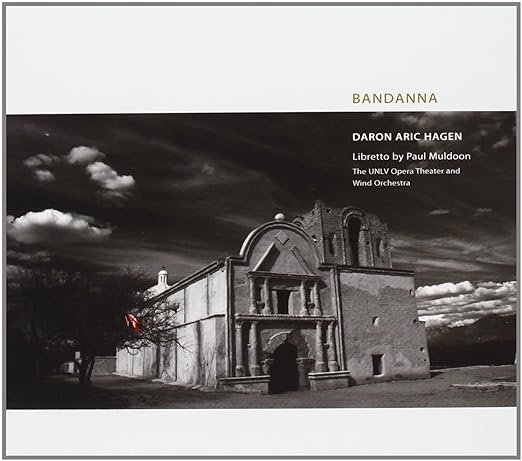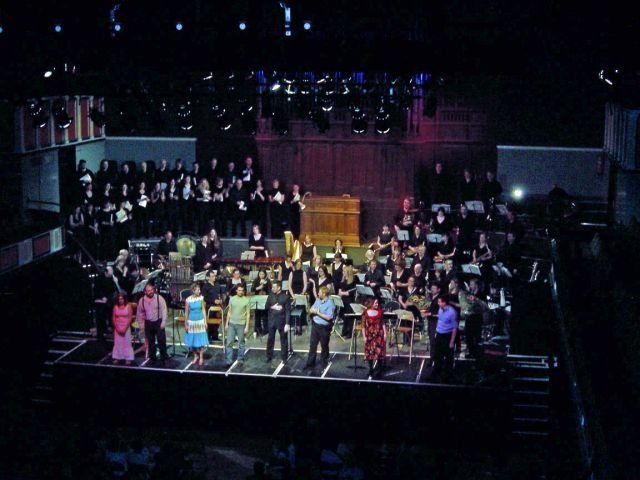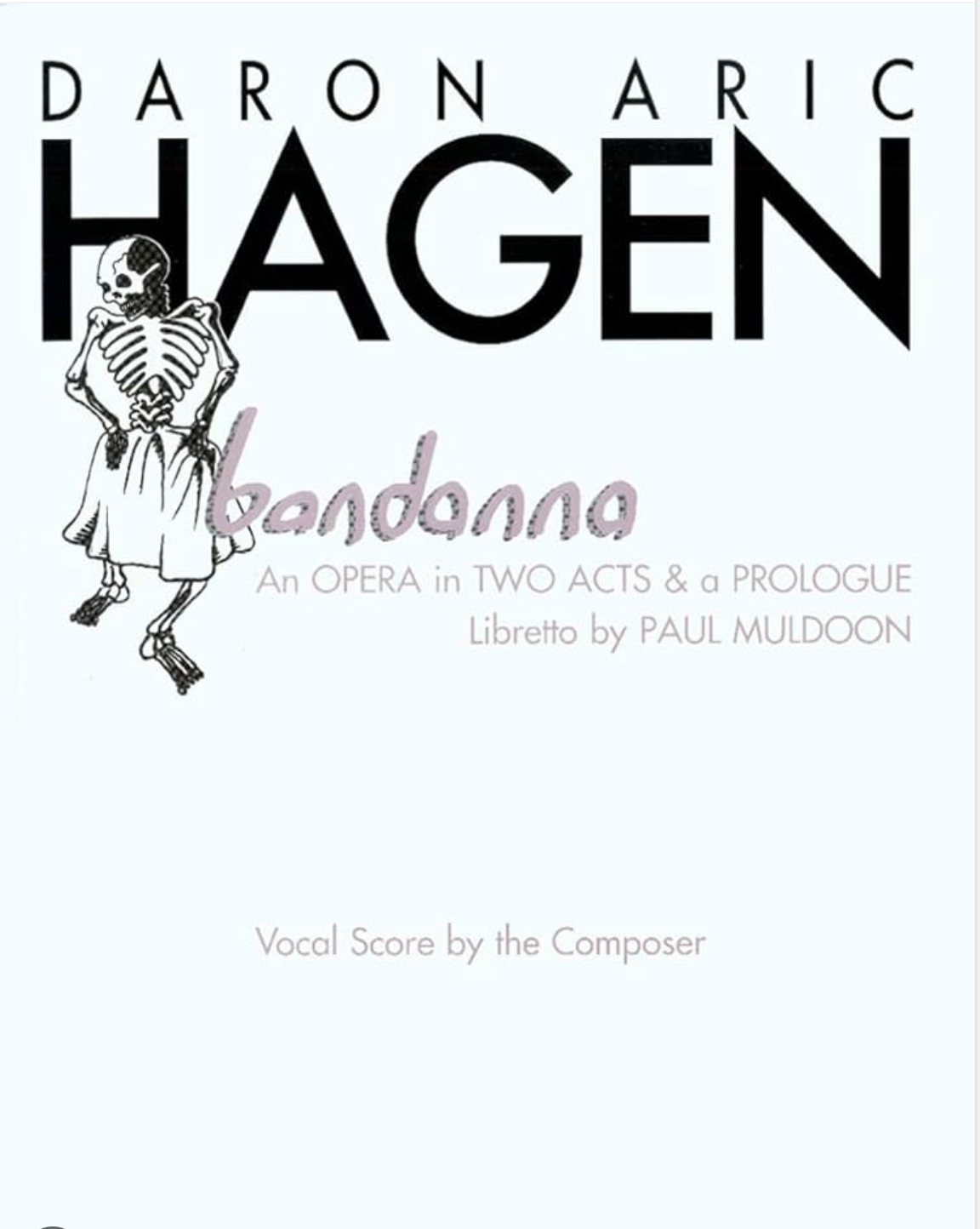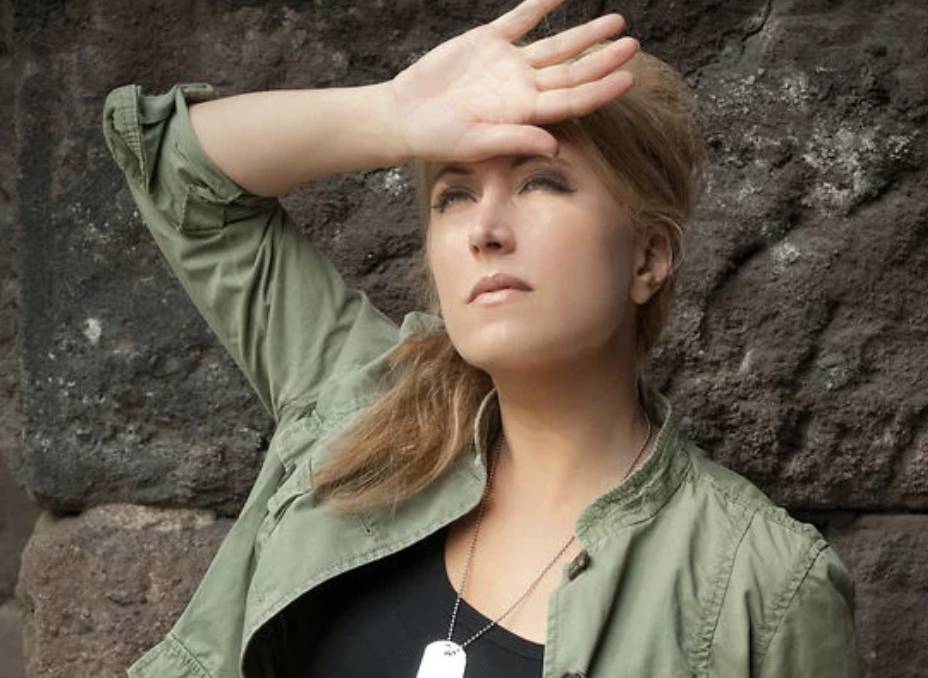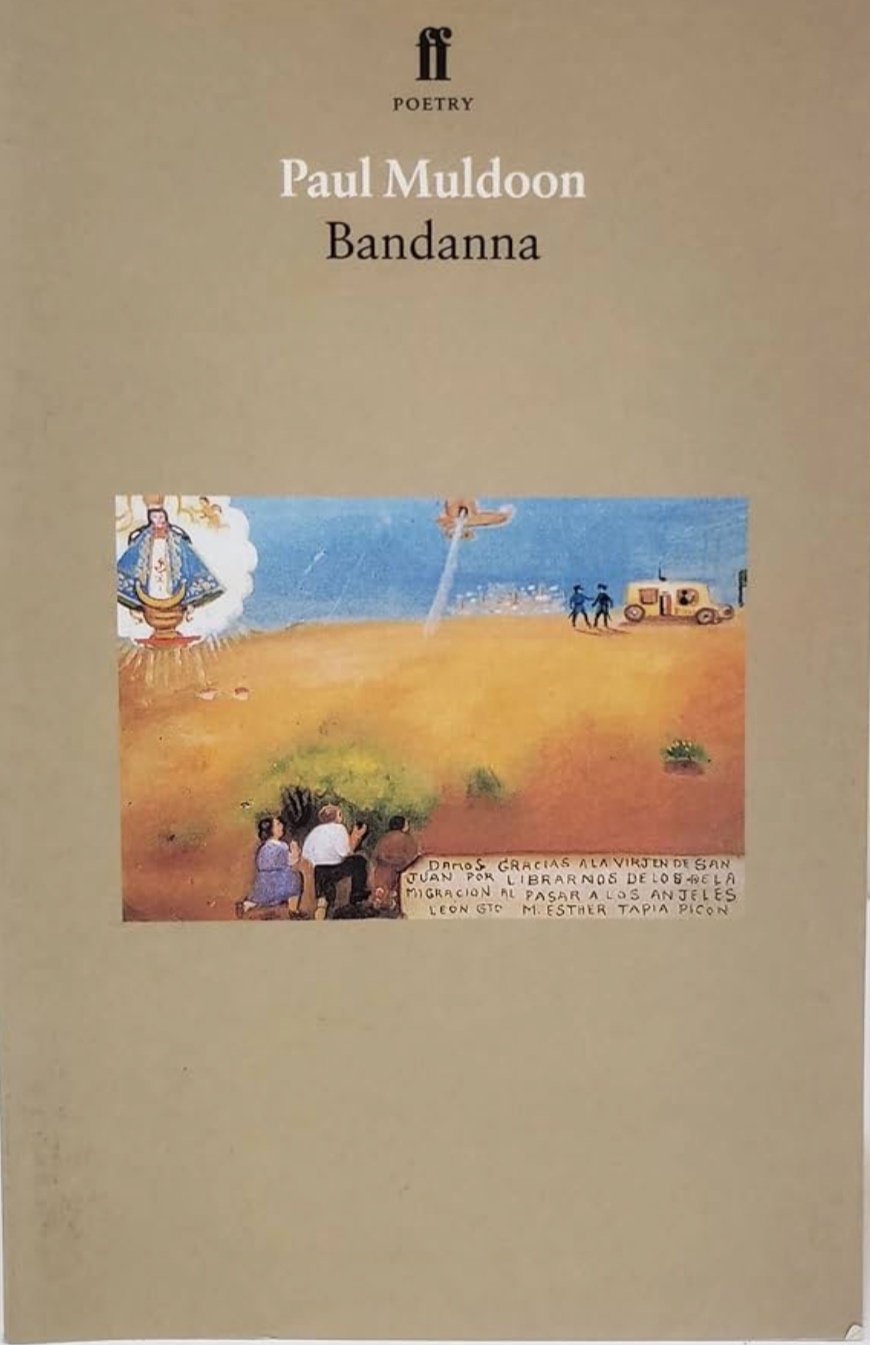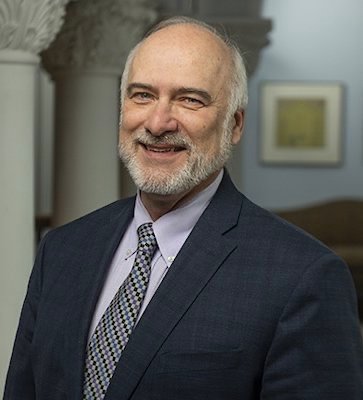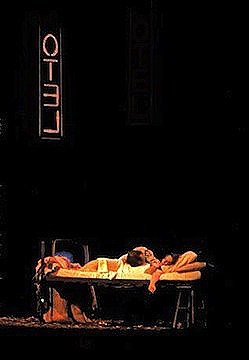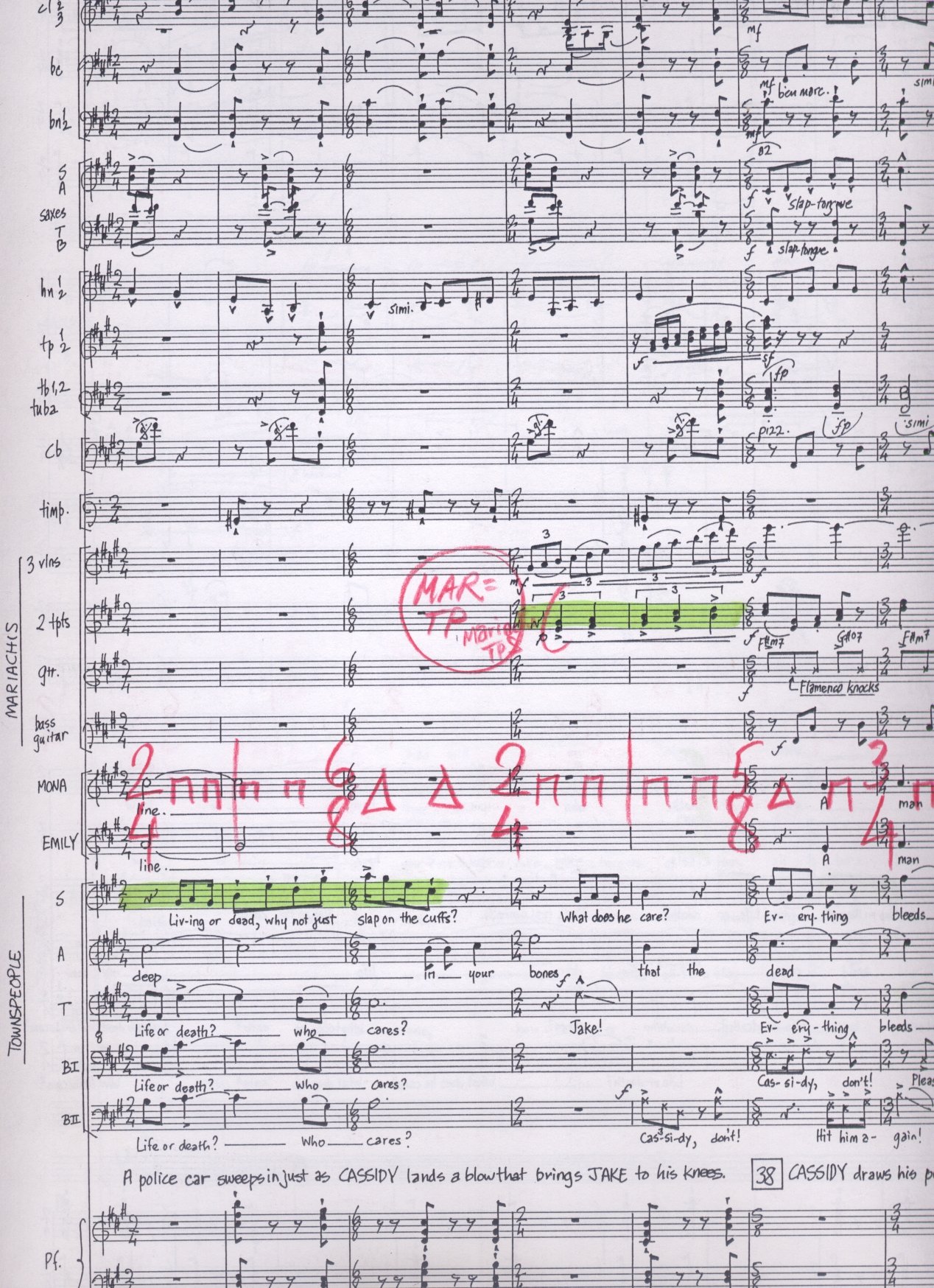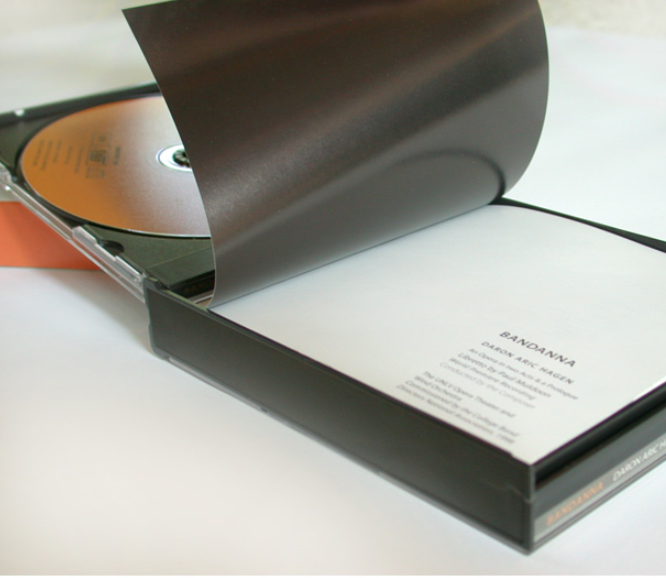An opera in two acts and a prologue
Duration: 120 minutes
Music Text
Libretto: Paul Muldoon (E,S)
Scoring
solo voices: S, Mez-S, T, T, Dram-Bar, Bar, B; 2 mariachi singers; mixed chorus; 2 fl (I,II=picc, alto), 2 ob (II=CA), 3 cl (III=BCL), bcl, 2 bsn, ssax, asax, tsax, barsax, 2 tpt (fglhrn), 2 hrn, euph (opt), 2 tbn, tba, 3 db, timp, perc, pf, hp; onstage mariachi band
Publisher / Licensing Agent:
Carl Fischer
Territory
This work is available from Carl Fischer for the world.
World Premiere
12 April 2000 McCullough Theater, Austin, TX
Robert DeSimone, director
Conductor: Michael Haithcock
Company: UT Opera Theater
Roles
Miguel Morales (T)
James Kane (Dram-Bar)
Jake Lopez (Bar)
Mona Morales (S)
Cassidy (Bass-Bar)
Emily (Mez-S)
Leader (T)
Two Mariachi Singers (men or women)
mixed chorus (12+ voices)
Time and Place
A small town on the Mexico-US border during autumn 1968
Synopsis
Touch of Evil is crossed with Under the Volcano in this searing, "soaringly eclectic" post-verismo retelling of the Bard's Othello set in the spiritual, physical, and ethical "liminal zone" of the Texas-Mexican border on the "Day of the Dead" in 1968. Miguel Morales (Othello) is the police chief of a small town on the USA-Mexico border. He is married to a mestizo woman named Mona (Desdemona). His lieutenant Jake (Iago) spends his off-duty hours spiriting people across the border illegally; Kane (a Caucasian labor organizer from Chicago) is stirring up trouble. The action centers on the wedding of Jake and Emily (Emilia), and features the unfortunate planting of Mona's bandanna by Kane and Jake in Cassidy's (Cassio) pocket, and the subsequent murder of Mona by her husband. Set on the "Day of the Dead," the opera's unifying concept is the idea of the borderlines between emotional, metaphysical and moral states.
Production Stills
Here
Listen
Spotify | DRAM
Links
Wikipedia | Score | Libretto | Recording
Selected Notable Performances
- American Concert Premiere: 3 March 2000 / Ham Concert Hall, Las Vegas, Nevada / UNLV Opera Theater and Orchestra / Daron Hagen
- European Concert Premiere: 26 April 2006 / Parr Hall, Warrington, UK / North Cheshire Concert Band; Manchester Chamber Choir; RNCM Soloists / Mark Heron
Selected Press
"Composer Daron Aric Hagen (b. 1961) and poet/librettist Paul Muldoon could not have known in 1998, when they were commissioned to write Bandanna, that illegal immigration would become such a hot topic by the summer of 2006, when this recording was released. Even so, it was still a fairly provocative subject for an opera — the policing of immigrants crossing the Texas—Mexico border in the late 1960s, as a backdrop for a hot-blooded desert tale of lust, jealousy and revenge. In musical terms, Hagen combines elements of the vernacular and the opera house, drawing on both sacred (a recurring “Dona nobis requiem”) and folk (the Mexican “Day of the Dead” celebration) traditions. Hagen’s contemporary-music bona fides are impressively in evidence, but the popular element is never far off, as in, for example, a series of dances in the Act II wedding (waltz, bossa nova, tango), plus the frequent contributions of an onstage mariachi band.
The opera’s finest moments come when Hagen manages that wonderful, much-sought fusion of highbrow and lowbrow, championed by, among others, Leonard Bernstein (with whom Hagen studied). One of the best examples is an Act I aria for Jake, a local policeman who sympathizes with the immigrants and moonlights by helping them slip into the country. Jake sings of his love for Emily, his fiancée, who he knows feels neglected because of his demanding double life. This sinuous jazz-tinged aria is a slow dreamy waltz that features a smoky alto sax in the accompaniment. Then, as the topic moves to Morales, the volatile chief of police, who lake knows suspects him of professional duplicity, the orchestra becomes dissonant, driving and explosive. As Jake plots his revenge Morales has passed him over for a promotion), we hear snarling trombones and cascades of vibraphone-dominated dissonance. All this is highly dramatic and accomplished seamlessly. Earlier a “double duet” for the four principals shows a great deal of contrapuntal skill and melodic appeal. The orchestration, for a thirty-piece “wind orchestra,” creates a distinctively vibrant, ear-catching fabric. The only strings are the violins of the onstage mariachi band; when the three violinists turn up as the sole accompaniment to the Act II “Prayer” for Mona. Morales’s wife, the contrast is strikingly lovely.
The characters are compelling and musically differentiated. The cast conveys the grand passions effectively and with full conviction, if not absolute vocal perfection. Muldoon’s libretto manages to be both poetic and dramatic; Hagen saves the librettist when the metaphoric imagery occasionally threatens to spin out of control. The composer conducts the forces of the University of Nevada Las Vegas Opera Theater and Wind Orchestra, who acquit themselves remarkably, in a complex, multi-stylistic and ambitious new work.
–Joshua Rosenblum - Opera News, December 2006
"Hagen not only composed this opera, but conducts it as well. From the outset, I'll state that the performances and production values are superlative, that the instrumentalists and chorus from the University of Nevada Las Vegas never seem short of professionalism, despite their student status, and I doubt any opera's recorded premeire could be better than this. Henry Fogel has already reviewed this piece ... he feels it's a masterpiece, and it was on his 2006 Want List. Hagen is an extremely savvy and lyrical compsoer. His text setting is great for highlighting the strengths of each vocal type, and it leads to almost flawless English enunciation. One of the work's greatest coups is the orchestration, which is for wind ensemble. The result is so fluent one really doesn't ever miss the strings, and it's a great argument for this to be done far more often, especially considering the great logistical burdens new oepras face. ... The overall result is dramatically sure and lyrically compelling.
—Robert Carl, Fanfare, May/June 2007
"Daron Hagen's opera Bandanna received its European premiere in the somewhat unlikely surroundings of the Parr Hall, Warrington, on 29 April. ... Hagen's vocal writing is masterful. His use of the wind orchestra is equally stunning, to the point where one was never aware of a wind band, but simply of dramatic music. He brilliantly explores the various ensembles within the band, which not only gives the ear welcome changes of colour but also creates a lightness of texture which rarely overpowered the voices. Were the performance given in a theatre with the orchestra in the pit, the balance, which was generally excellent, would have been perfect throughout. The musical language is a very individual one, with Puccini-esque grand gestures alternating with positively modernist orchestration, all in perfect support of the drama. I particularly enjoyed his use of the mariachi band and was deeply moved by the serene final soprano aria set
with three solo violins. ... For me, the highlight was to see [the orchestra and chorus] so engaged, with many in tears in the final scene. This was, after all, a modern opera, yet it spoke directly to each and every player and singer. Putting this on with a community band in Warrington was nothing short of insane. After the composer, the hero of the evening was Mark Heron. His vision, determination, organisation, musical brilliance and sheer ambition (for his band, not for himself) gave all present a night they shall never forget. The boundaries of the community band in Britain have been truly shattered and a very healthy audience was there to witness it."
—Clark Rundell, CBDNA Journal, Fall 2006
"Bandanna is a banner of triumph! Hagen's descriptive music soars and swells, invoking tender hopefulness in Mona's prayer of faith, while also describing the intense emotions of the distraught Miguel with discordant chord structuring and rhythmic patterns ... this opera should be destined to become a standard in the repertoire. "
—Carolyn Wardele, Las Vegas Review-Journal, 3/4/00
"Hagen's masterful score captures the rage, intrigue, and tender resignation of the tale."
—Jerry Young, Austin American Statesman, 2/99
"You will find Bandanna's weave most intricate."
—Andrew Osborn, Boston Review, 3-4/99
"Sonorous, highly-varied, rhythmically gripping, dramatic music; one can scarcely imagine another living composer pulling it off."
—Clarino Magazine, Germany
"The drama is powered by a strong emotional thrust, most of it conveyed in the form of popular song, and leads to a shattering climax."
—Read Ireland Book Reviews, Ireland
"Daron Hagen’s Bandanna was commissioned by the College Band Director’s National Association (CBDNA) as part of their effort to raise the profile of band music in American musical life. The boldness of the commission (Bandanna is an opera whose accompanying ensemble is a wind and percussion orchestra) is evidence of the Association’s seriousness. It is a shrewd move, as well””if a sizable fraction of the institutions participating in the commissioning consortium (they are listed in the sumptuous booklet accompanying this release) mount the work, it will gain a wide hearing and help raise band music’s profile.
Bandanna is a kind of “headline opera” in that its events are surrounded by a theme of contemporary interest””immigration. The story (by Paul Muldoon, who also wrote the libretto) has the elements that traditionally make for compelling opera””violence, secrets, treachery, and infidelity or claims of infidelity, in the setting of a Texas border town in 1968. Muldoon’s libretto is poetic when dealing with feelings and direct when describing action. The stage directions are vivid for a reader, though they may be a bit constricting for a director.
Daron Hagen is an experienced and accomplished composer, for winds as well as other media. His melodies are singable and memorable without being cloying. His text setting is outstanding, and as Sequenza21 readers know well, English is a difficult language to set. The rhythms, in both vocal and instrumental parts, are supple when appropriate, and driving or incisive when that is called for. Harmonically, the music is tonal, sometimes venturing into pop/Broadway territory, with more astringent harmonies at dramatic moments.
I want to single out the orchestration. I think one of the reasons wind music has had some difficulty holding a place in the mainstream of concert music life is that so much of it sounds alike. Massed flutes and/or clarinets carry the melody, with occasional help from the trumpets, horns for majesty, trombones for gravity, the lower instruments grinding away in accompaniment, and banging percussion. This, combined with sheer volume, makes many band concerts exercises in aural fatigue. Hagen’s music in Bandanna offers a way out of the fatigue syndrome, with its use of thinner textures and a more flexible use of instruments. Hagen’s judicious and creative use of percussion is a highlight of the music, and all of the instrumental writing is idiomatic and makes the band sound work.
The performance is excellent, and we are assured by the composer that it is what he meant. The student singers from the University of Nevada-Las Vegas, Lesley DeGroot, James Demler, Paul Kreider, Mark Thomsen, and Darynn Zimmer are well-trained and more than up to the task. The UNLV Opera Theater Chorus and Wind Orchestra acquit themselves with style and poise, as well.
Bandanna is accessible to small opera companies as well as college opera companies, both of which often struggle to find new works to stage. It should have a long life."
- Sequenza 21, Posted by Steve Hicken in CD Review, Steve Hicken, June 2015

